Looking for a new digital agency to streamline and improve your SEO content strategy? Schedule a free marketing evaluation with our team to meet the right agencies fast. It’s fast, free, and we get it right.
A question SEO (search engine optimization) specialists often get asked is “should I create fresh content specifically for SEO?” Generally, what most people really want to know is how publishing fresh content on their site impacts their overall SEO. To be honest, this question is spot on, because—well—SEO really matters.
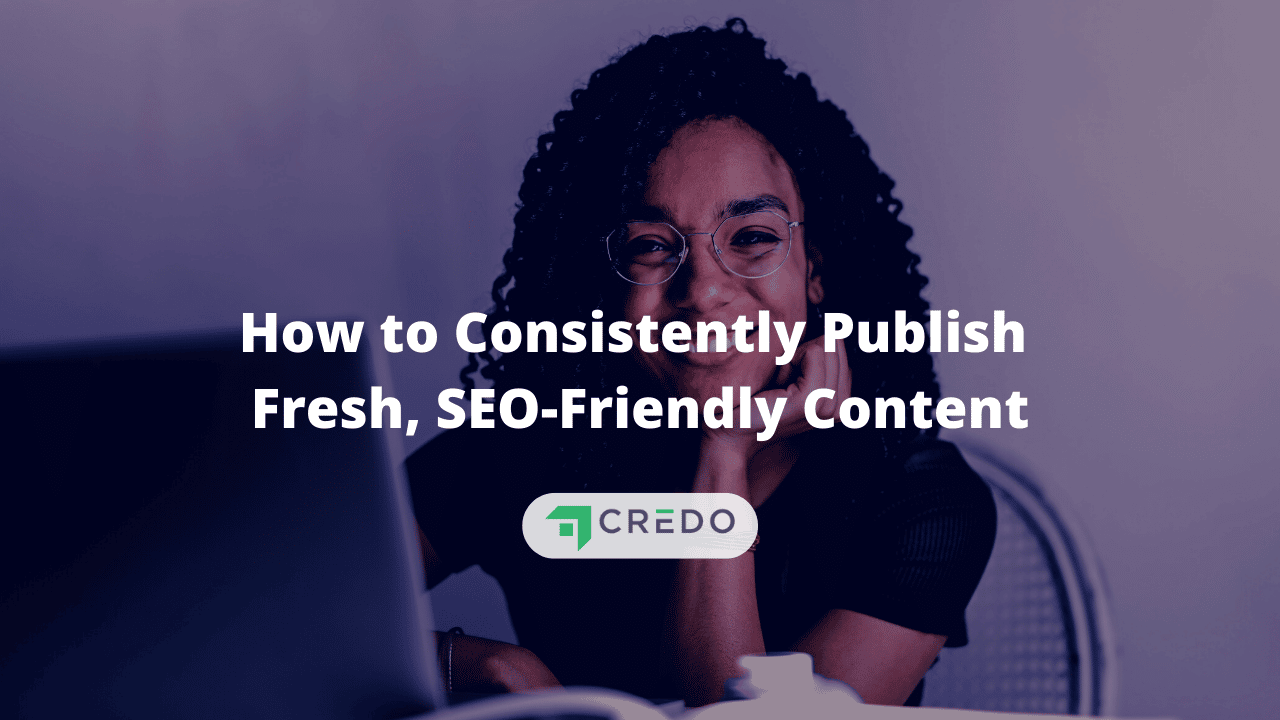
As important as SEO is for nearly every brand, the unfortunate truth is this topic is often misunderstood.
Let me be crystal clear from the start about what “fresh content” is not:
Fresh content is not simply updating a couple headers, images, or meta descriptions on existing pages (homepage, product pages, blog posts) in order to try to appear “fresh” to the search engines.
Google is wise to this old trick. If you are doing that, I would say save your time and do not do that anymore.
With that settled, let’s talk about what fresh content is and how it impacts your SEO.
Table of Contents
Publishing Timely Content
When SEOs talk about fresh content, what they usually mean is timely content.
Timely content around a topic matters for breaking news sorts of topics. These can often be seen in Google’s search results in a Top Stories section of links for the query. Trending topics in one channel are often doing the same in others. Check top stories and then head over to Twitter and check what’s trending. Usually, the same things. What I mean to say is, don’t fight the trend—make it work to your benefit.
For example, there was a big to-do when news of the new Beauty and the Beast soundtrack was announced:

Below that is a video listing. Then, other recent articles that may or may not be featured in Top Stories. Digital publications saw this story was gaining traction and published timely information about it. Google likes that.
These Top Stories boxes can even appear for one-word terms such as [immigration], which remains a heated and frequent topic of discourse in the United States these days:
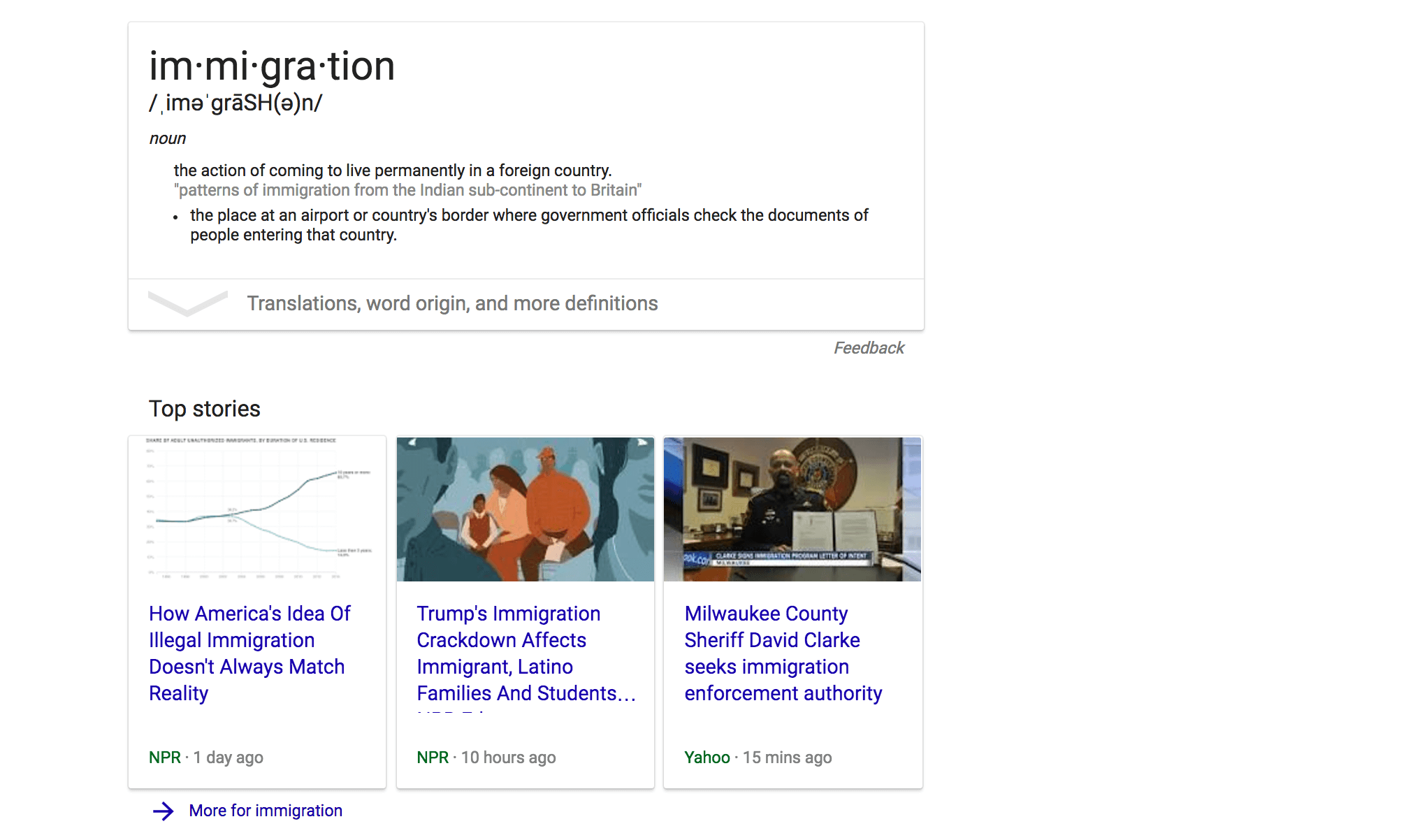
Timely Doesn’t Always Mean New
Notice that below that box are regular search results that you would normally expect:
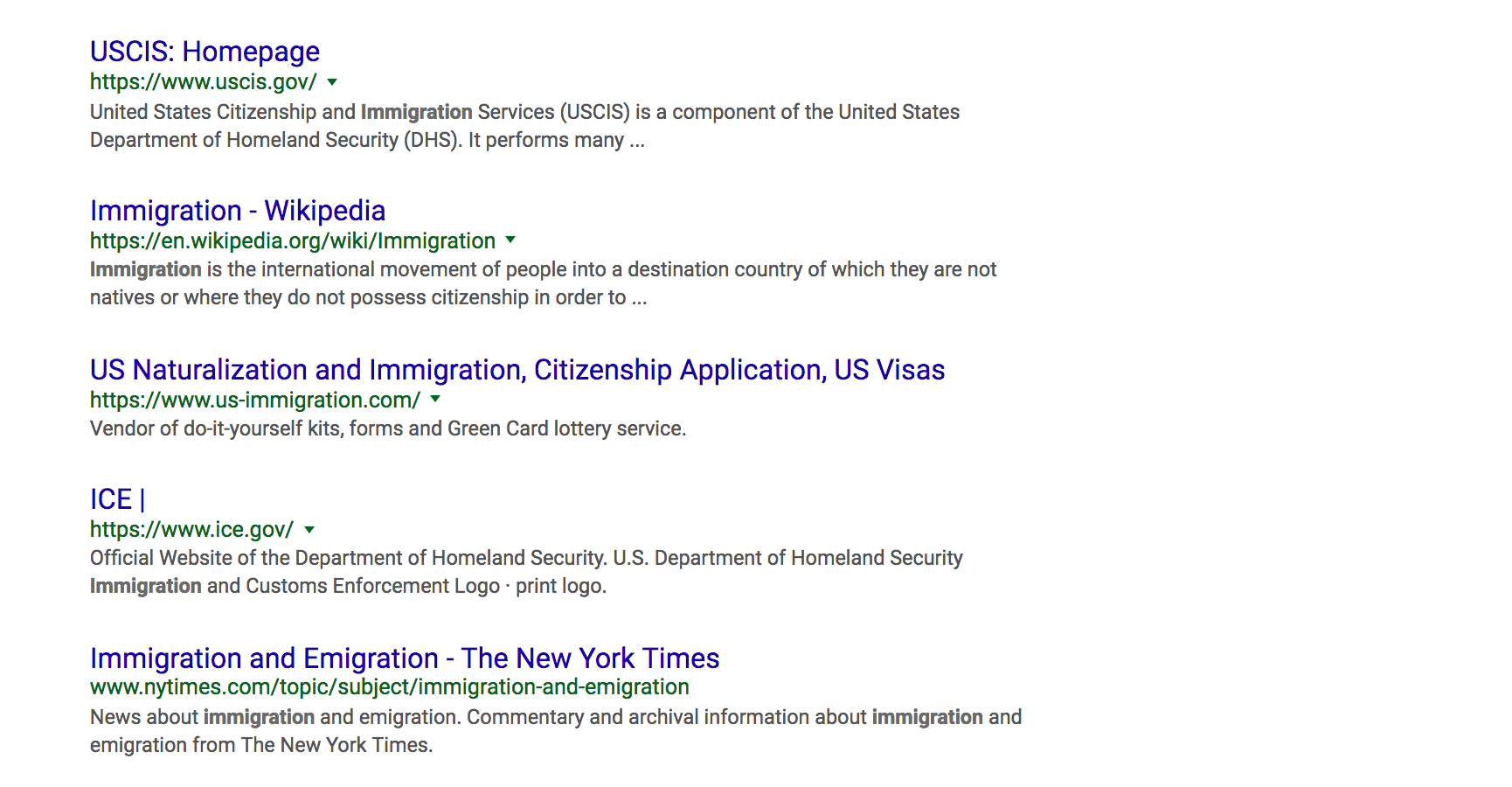
Those pages are not new by any means but are updated often. They are the most relevant answers to this query—from Google’s perspective. As trusted resources for millions searching for answers on immigration to the United States, Google grants these pages true SEO staying power. Google’s version of “if it ain’t broke, don’t fix it.”
Not only do these pages offer timely information people want, they now have Domain Authority on the subject. In terms of strong SEO tactics, this is an incredibly important piece of the puzzle to consider.But I digress…
The Impact of Google’s Freshness Algorithm
What we—fun fact: I was an SEO specialist and growth marketer for brands like Trulia and Zillow for nearly a decade—often see is pages will rank well for a query because it takes advantage of QFD, which stands for “query deserves freshness”. The freshness algorithm was actually an extension of Google’s pre-existing QFD methodology.
QFD is defined as:
“Search requests that deserve up-do-date search results.”
Basically, these are trending queries from which people expect fresh, timely content. These days that is just about all people want—to be up to speed on the latest trends, news, celebrity who is now canceled. You get it. People want to be in the loop and you can benefit from game-planning how to ride those loops.
To expand on this concept, Google explains that “QDF revolves around determining whether a topic is ‘hot.’ If news sites or blog posts are actively writing about a topic, the model figures that it is one for which users are more likely to want current information. The model also examines Google’s own stream of billions of search queries.”
However, what we often see happen for high-ranking pages is that content that previously ranked well—because it was timely and relevant—gets pushed down the SERPs (search engine results page) as time goes on. These pages in the example above are constantly updated with timely information. With more and more traffic over time, these pages begin to settle into their long-term ranking position.
Understanding Spikes In Search Volume
We live in… a world. Unfortunately, not all the spikes in search volume will make much sense. That doesn’t mean they aren’t good examples to understand how search engines think and function. For instance, consider the search query: [did the holocaust happen]. Bewildering as it is, this query spiked in search volume in December 2016.
Why? Because Google was ranking a Holocaust denial site in the first spot.

When it spiked back in December 2016, we saw a lot of sites like SearchEngineLand.com and others covering news that ranked quite well. They saw a trend and rode it to the first page of Google’s SERP. Ironically, they did this by pointing out that Google had dropped the ball in allowing this page to rank. Fair enough and well played.
After the hype of a trend settles, we generally see resource sites that should rank long-term stick around at the top of the SERP. These, as well as some news sites with date-specific published annotations and updates. Wikipedia usually tends to be right at the top alongside those examples (as shown above).
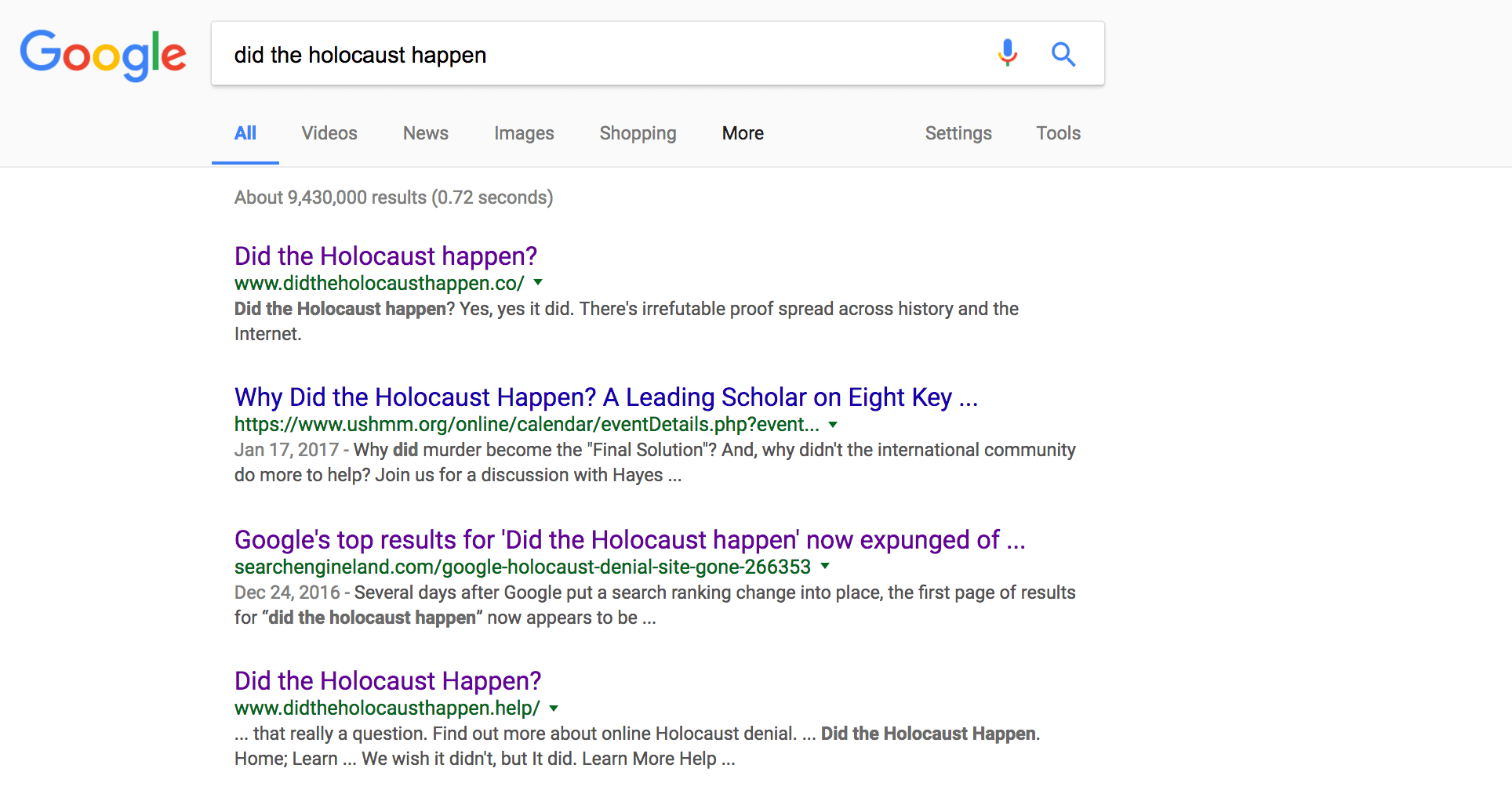
Do New Pages Matter for SEO?
Often times people think that adding new pages to their site alone will help with better rankings. The truth is, having more high-quality and relevant pages on your site can lead to more traffic because:
- You have a wider pool of keywords you can target.
- With outreach and promotion, new content is more likely to get backlinks from other sites.
- Both of the above lead to higher rankings for that page—and your site as a whole.
But contrary to popular belief, you cannot train search engines to come back to your site more or less often. However, you can direct them according to how often your content is updated via your XML sitemaps.
As a general rule, the more links your website has the more often Google or Bing will come back and crawl because they are discovering your site through their web crawl more often. That being said, quality stills beats quantity—especially following Google’s 2022 Helpful Content Update.
So, yes, there is value in fresh links. Search engines want to discover content as quickly as possible after it is published. This happens via a variety of means—social media and XML sitemaps primarily. That means if your site is getting backlinks from fresh content, your site is seen as relevant and helpful—and your domain authority rises.
Updated Content and What It Does
I started off this piece by talking about how “fresh content for SEO” is not updating the “SEO content” on your homepage monthly and thinking that will help you rank.
However, there is an argument for overhauling existing content on a page and how that can help you rank measurably better. As Cyrus Shepard talked about here:
The age of a webpage or domain isn’t the only freshness factor. Search engines can score regularly updated content for freshness differently from content that doesn’t change. In this case, the amount of change on your webpage plays a role.
He illustrated it like this:
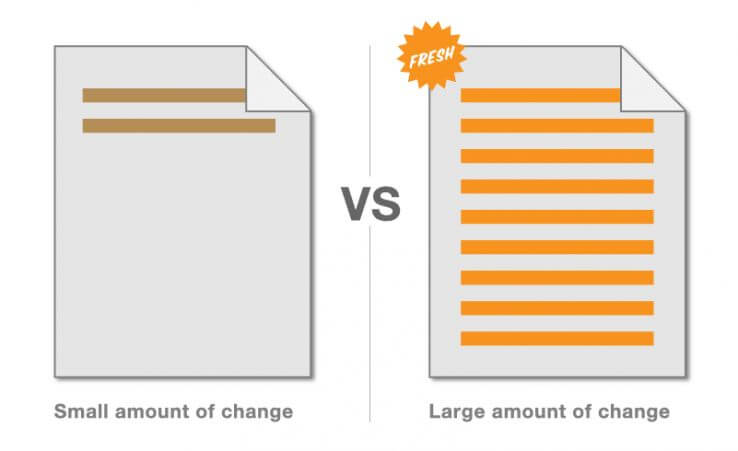
Basically, making small changes to your page (blocks of text, one image) may be completely ignored and thus not help you out at all.
However, if you overhaul and update most of the content of a page that still provides value to a modern-day audience, you can see a measurable uptick in traffic. Here’s one example that I did:

Based on this (and others agree), you may be better served to go back and overhaul content that ranks ok (think the bottom of the first page or top of the second page) and see a rankings boost from that, coupled with new outreach.
The concept of fresh content for SEO can be very powerful—when you understand and leverage it correctly for your specific brand.
If you’re a small business and not a media company, you don’t need to aim for that Top Stories feature. Instead, try doing something like this case study by Wallaroo Media points out and create long-term content of value that drives consistent, mostly organic, and qualified traffic to your site.
Good luck!

